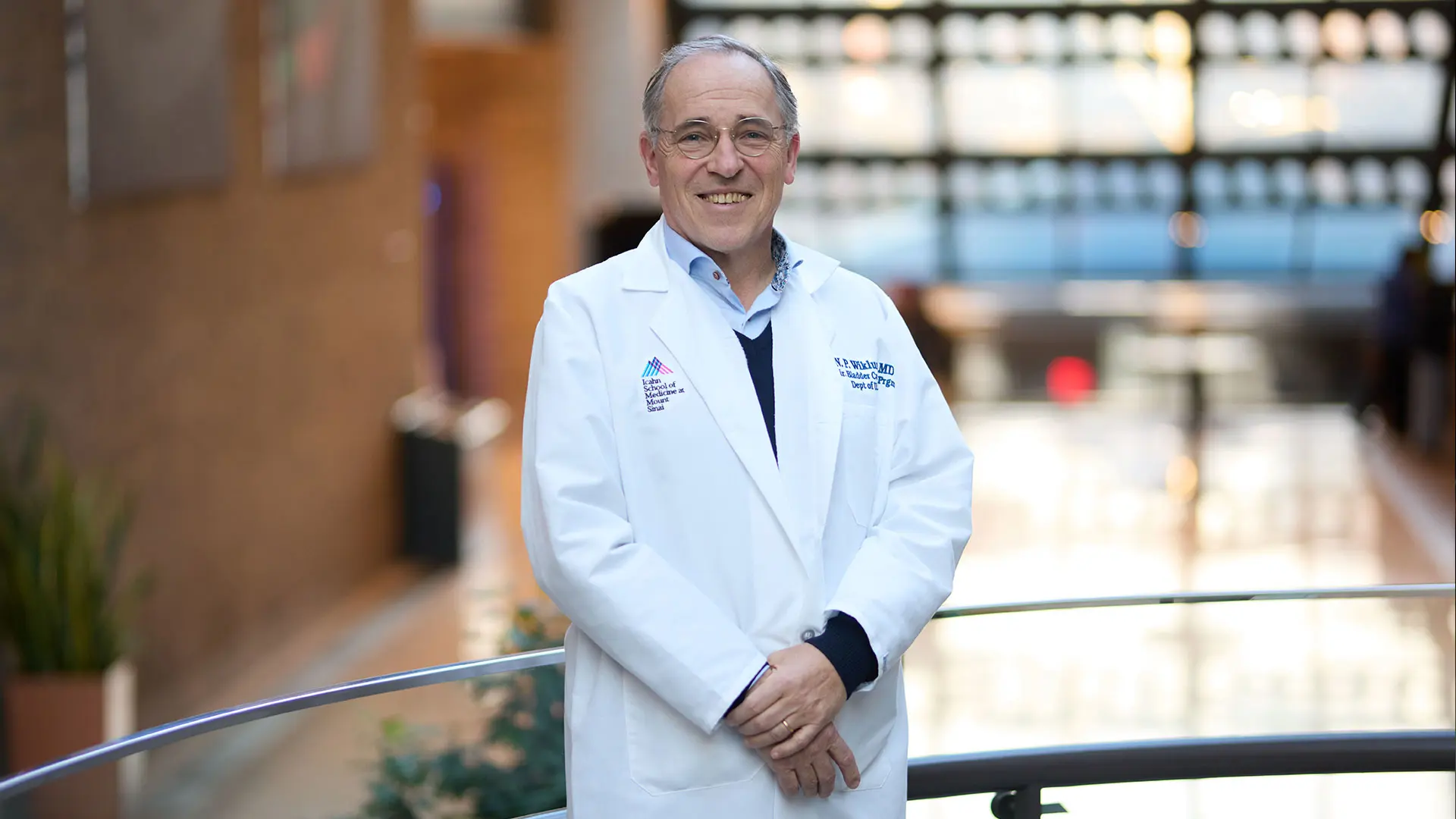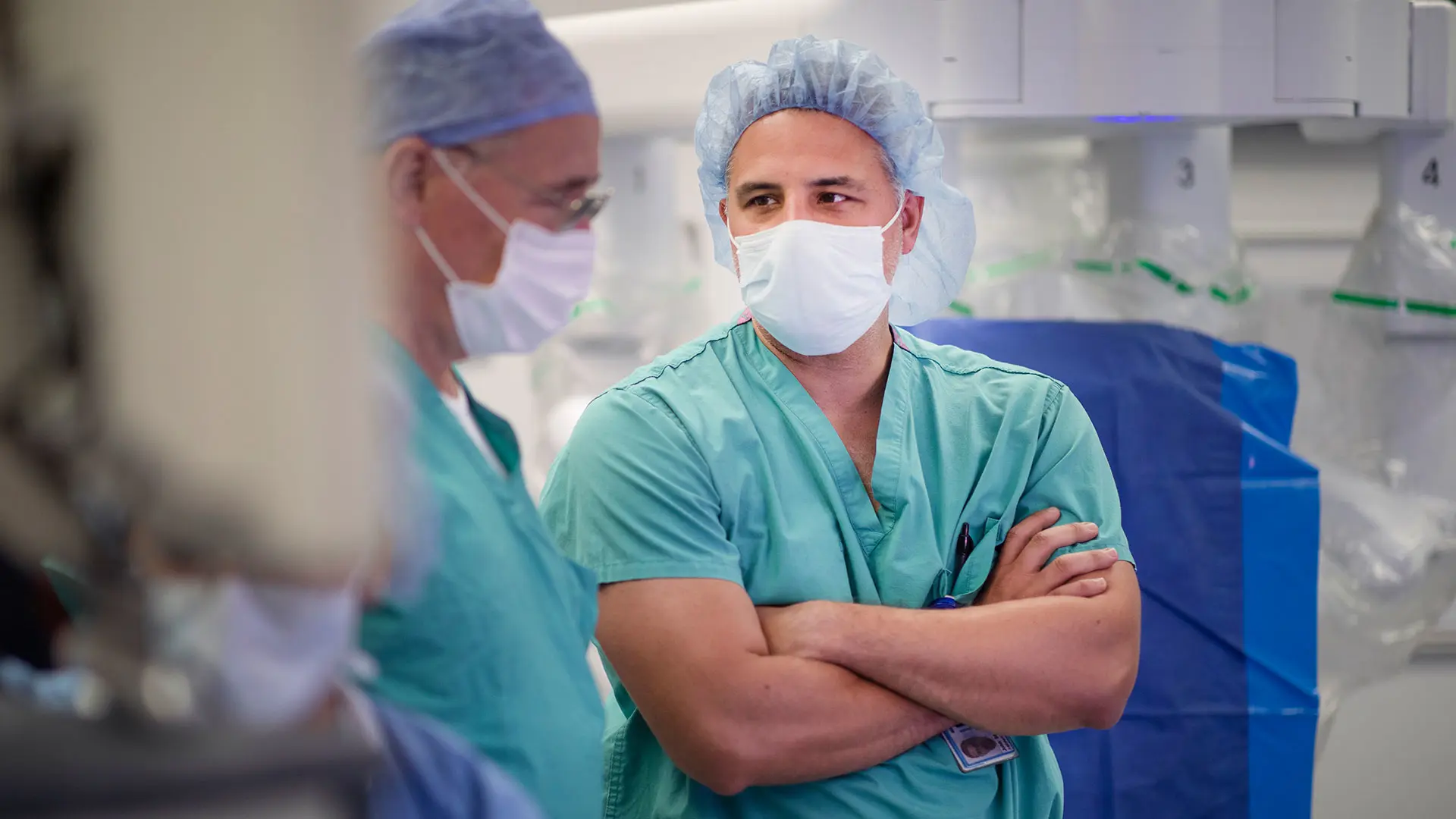In an ongoing quest to achieve enhanced recovery pathways among patients who undergo robot-assisted radical cystectomy (RARC) with intracorporeal urinary diversion (ICUD) for treatment of muscle-invasive or high-risk noninvasive bladder cancer, Mount Sinai has developed a protocol that eliminates opioids from postoperative pain management with exceptional results.
The protocol involves blocking the quadratus lumborum, a deep abdominal muscle that is a vital part of the thoracolumbar fascia. Prior to surgery, an anesthesiologist administers a local anesthetic adjacent to the muscle. The anesthetic then spreads posteriorly through the thoracolumbar fascia and is thought to communicate with the paravertebral space, thus resulting in a longer lasting and more significant degree of pain management than the more commonly used transversus abdominis plane (TAP) block. After the procedure is completed, the patient is administered gabapentin, ketorolac, and a lidocaine patch to assist with pain management.
“This is an approach that has been widely adopted for pain management at Mount Sinai, but it has not been widely used nationwide,” says Peter Wiklund, MD, PhD, Professor of Urology at the Icahn School of Medicine at Mount Sinai, and Director of the Bladder Cancer Program of the Mount Sinai Health System. “We have now performed more than 400 robotic radical cystectomies with intracorporeal urinary diversion using this non-opioid pain management protocol, and more than 90 percent of patients did not need any narcotics. Based on those results, many other medical centers are now adopting our protocol.”

Peter Wiklund, MD, PhD, Professor of Urology in the Department of Urology at the Icahn School of Medicine at Mount Sinai and Director of the Bladder Cancer Program at the Mount Sinai Health System
The efficacy of this non-opioid approach to pain management was verified in a retrospective review of 116 patients who underwent RARC with ICUD between 2016 and 2020. For comparison, 74 consecutive patients who underwent extracorporeal urinary diversion with the same non-opioid pain-management protocol were included in the review.
The results showed that 12.1 percent of patients who underwent ICUD required narcotics during hospitalization and the median morphine milligram equivalent requirement was 52.0 (interquartile range: 7.62 to 157). Additionally, only 12.1 percent of patients were prescribed opioids postoperatively at discharge, with 4.3 percent requiring a second prescription within six months of surgery.
Furthermore, among patients who did not use mu-opioid blockers, a minority (15.7 percent) experienced a postoperative ileus. The 30- and 90-day all Clavien complication rates for patients were 44.8 percent and 49.1 percent, respectively. Nineteen patients were readmitted within 30 days of discharge, none of which was pain related. The patients who received ICUD experienced similar complication and readmission rates to those who received extracorporeal urinary diversion (ECUD). The results were published July 2021 in Urologic Oncology: Seminars and Original Investigations.
The benefits of the non-opioid pain management protocol extend beyond elimination of the risk of addiction among patients. The protocol also facilitates patient recovery. Opioid pain medication can exacerbate and slow recovery from a postoperative ileus and cause dizziness or drowsiness that increase patient risk of falls.

John P. Sfakianos, MD, Assistant Professor of Urology and Urologic Oncology at Icahn Mount Sinai
“By eliminating the use of narcotics among patients, we have been able to reduce our ileus rate to approximately 18 percent without the use of any other agents to stimulate the bowels,” says John P. Sfakianos, MD, Assistant Professor of Urology and Urologic Oncology at Icahn Mount Sinai. “Moreover, we have achieved an average patient stay of four days, with 75 percent of our patients discharged within five days because they are able to be ambulatory quicker. That is one of the fastest post-cystectomy recovery pathways in the world.”
The development and success of the non-opioid pain management reflects not just Mount Sinai’s extensive expertise in RARC with ICUD but also its multidisciplinary approach to caring for patients who present with bladder cancer.
“Our surgeons, anesthesiologists, physical therapists, social workers—our whole team is aligned to help get our patients home quicker with positive outcomes,” Dr. Sfakianos says. “That commitment is exemplified by this protocol.”
